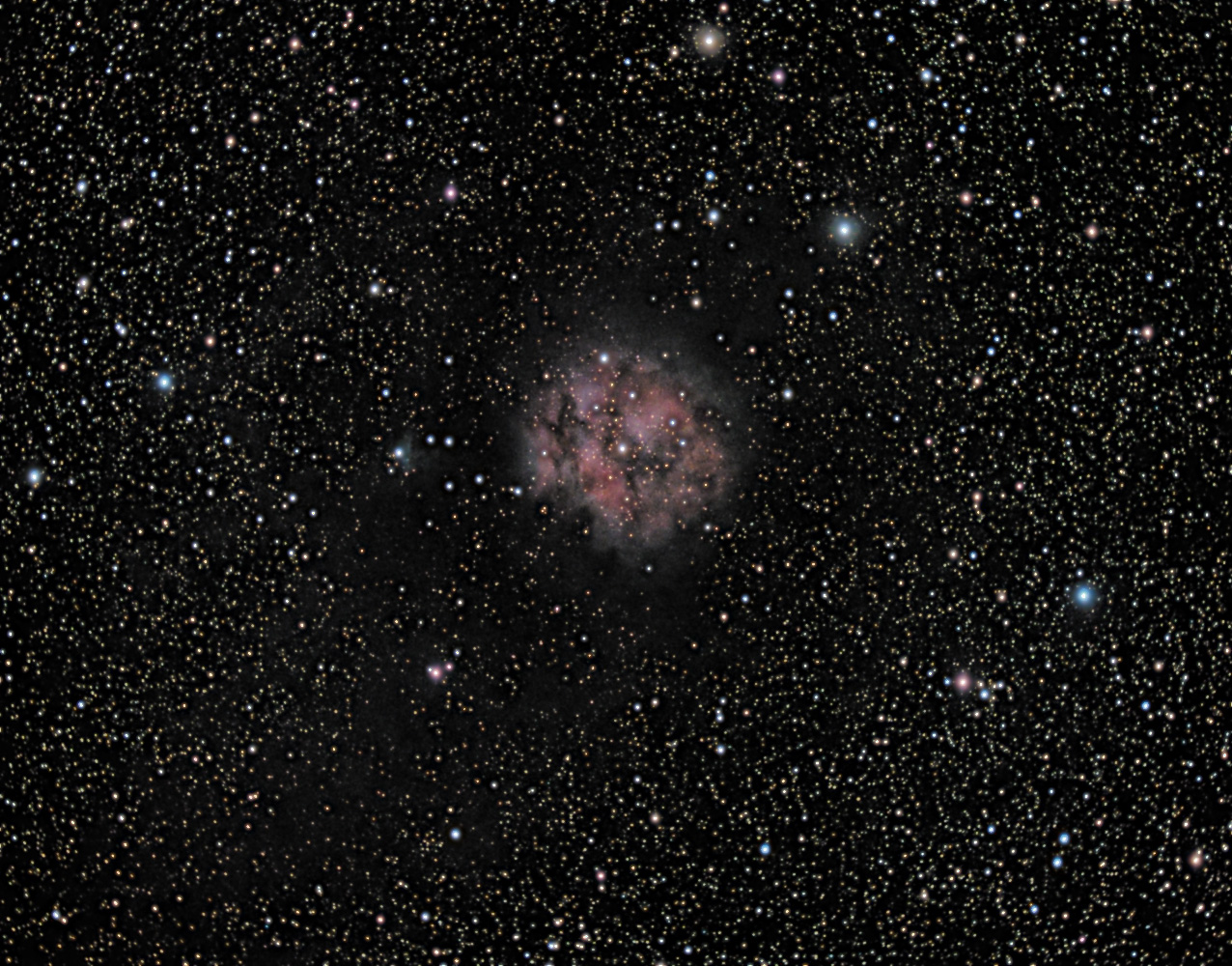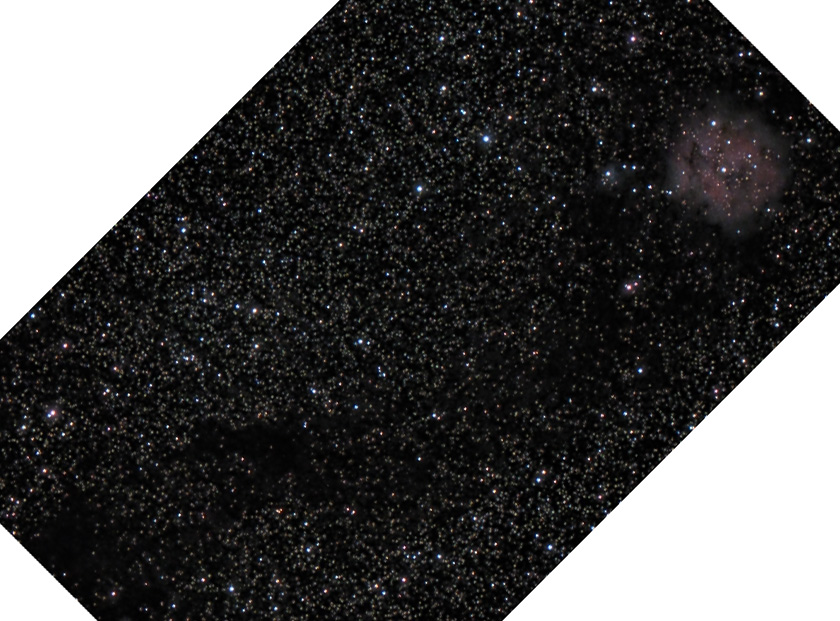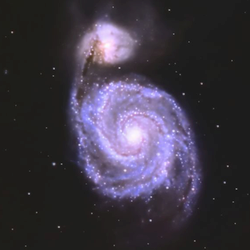The Cocoon Nebula, IC 5146, is a cluster of stars involved in a bright emission/reflection nebula riddled by filaments of dark nebula.
The Cocoon has a sort of poppy-like appearance, with a central star giving the nebula a floral resemblance. That bright central star powers the intense nebular glow, and clears out a cavity in the areas of star-forming dust and gas.

Dark nebula B168, similar to those I featured in the previous post, is an inseparable part of the scene, comprising a dark surround to the cluster and projecting down and to the left in this picture, giving the appearance of a trail behind the Cocoon.
Here’s part of an image I took last year (rotated to match the orientation of the previous picture) that shows the full extent of B168.

Early astronomer astronomer Maximilian Franz Joseph Cornelius Wolf was first to photograph the Cocoon in 1900, saying “It is placed centrally in a very fine lacuna, void of faint stars, which surrounds the luminous cloud like a trench. The most striking feature with regard to this object is that the star-void halo encircling the nebula forms the end of a long channel.”
The Cocoon is both a reflection and an emission nebula. A reflection nebula reflects the light of nearby stars, while an emission nebula is formed when light from nearby stars ionizes the gas and makes the nebula glow. This nebula does a little of both.
The Cocoon Nebula is about 15 lightyears wide and is located about 3,300 lightyears from Earth.
Since the images in this blog are relatively large and contain a lot of detail, if you are using a phone or a small tablet, you might want to consider returning sometime when you can use a computer with its larger screen.
